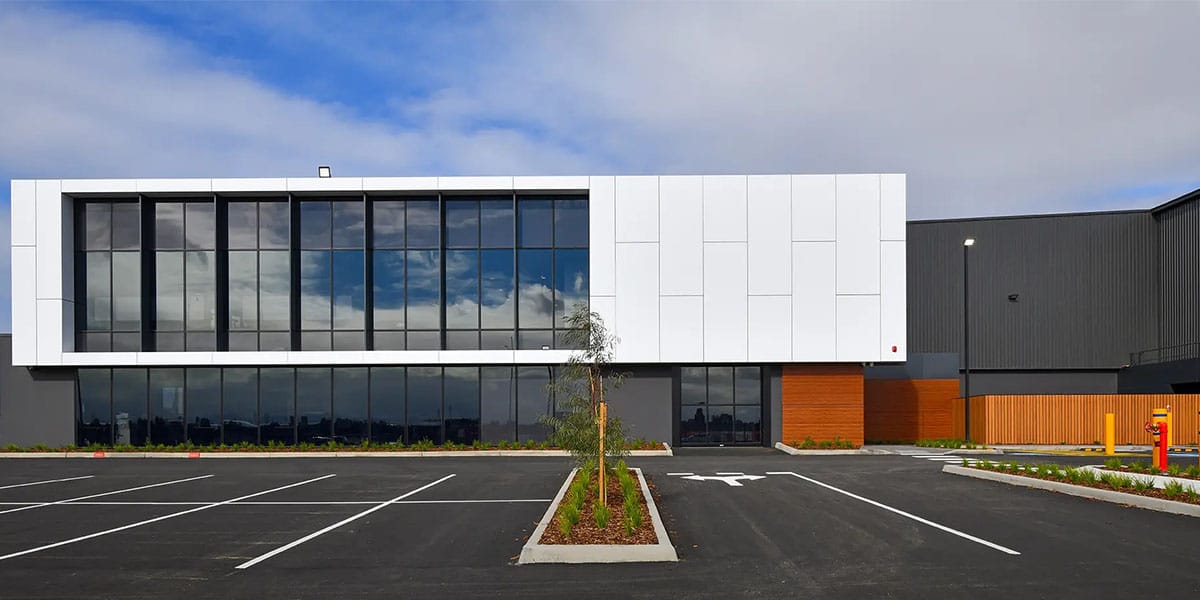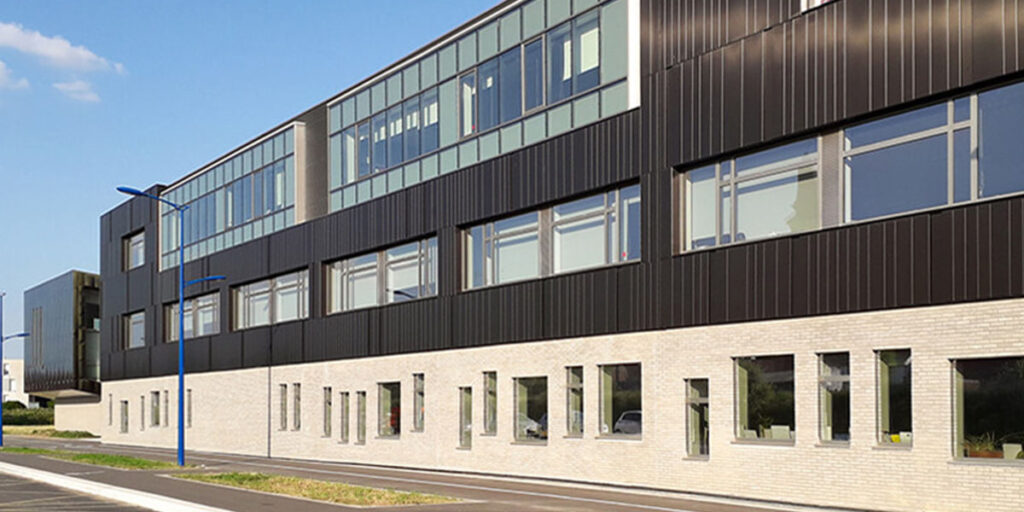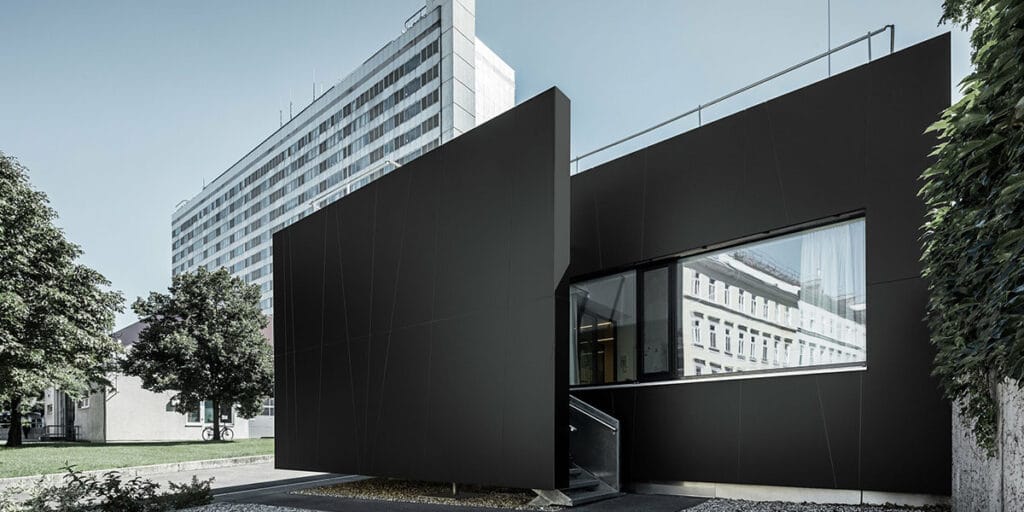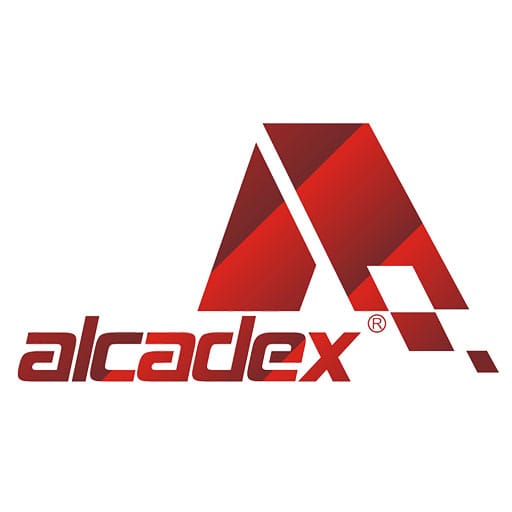
17 Mar What Are Aluminum Cladding Panels and Their Role in Architecture
Table of Contents
Aluminum cladding panels serve as a versatile and durable solution in modern architecture. These panels combine functionality with aesthetics, offering a lightweight yet robust material for exterior facades. Their ability to reflect heat in warm climates and retain warmth in colder regions enhances energy efficiency, reducing HVAC loads. Additionally, aluminum cladding resists environmental elements like wind and rain, ensuring long-term performance with minimal maintenance. The global demand for these panels continues to rise, driven by urbanization and construction growth, particularly in rapidly developing regions such as China and India.
What Are Aluminum Cladding Panels?
Definition and Composition
Aluminum cladding panels are a popular choice in modern architecture due to their durability, versatility, and aesthetic appeal. These panels are primarily composed of aluminum sheets bonded to a polyethylene core, creating a lightweight yet robust material. Two main types exist: solid aluminum panels, made entirely of aluminum, and aluminum composite panels, which feature a core material sandwiched between aluminum layers. This composition ensures excellent performance in both structural and decorative applications. The aluminum cladding system offers a reliable solution for enhancing building facades while maintaining structural integrity.
Key Features of Aluminum Cladding Panels
Aluminum cladding exhibits several key features that make it a preferred material in construction. Its lightweight nature simplifies transportation and installation, reducing labor costs. The material’s resistance to corrosion ensures longevity, even in harsh weather conditions. Aluminum cladding panels withstand extreme temperatures, maintaining their structural integrity without significant degradation. Additionally, they provide excellent thermal insulation, contributing to energy efficiency in buildings. Unlike wood or steel, aluminum requires minimal maintenance, making it a cost-effective choice over its lifespan.
- Durability: Aluminum cladding resists environmental factors like wind, rain, and UV radiation.
- Corrosion Resistance: The material’s natural properties prevent rust, ensuring long-term performance.
- Aesthetic Flexibility: Panels can be customized with various colors, finishes, and textures to suit diverse architectural styles.
How Aluminum Cladding Panels Are Made
The manufacturing process of aluminum cladding panels involves several precise steps to ensure quality and performance. The process begins with aluminum coil production, where large aluminum sheets are rolled to the desired thickness. CNC machines then cut and bend these sheets into specific shapes and sizes, allowing for intricate designs. Surface treatments, such as powder coating or anodizing, enhance the panels’ appearance and protect them from wear. For aluminum composite material panels, a laminating process bonds the aluminum sheets to a polyethylene or insulating core. Finally, rigorous quality testing ensures the panels meet performance standards.
| Process | Description |
|---|---|
| Aluminum Coil Production | Cladding sheets start as large aluminum coils, typically rolled to a thickness of 0.7mm to 1.6mm. |
| Cutting and Bending | CNC machines cut the coils into desired shapes and sizes, allowing for various panel designs. |
| Surface Treatment | Processes like powder coating and anodizing apply color and protect the aluminum from wear. |
| Laminating | Composite panels are created by laminating aluminum to insulating cores for enhanced performance. |
| Quality Testing | Testing ensures the cladding meets specifications for performance, adhesion, and resistance. |
This meticulous process ensures that architectural aluminum cladding meets the demands of modern architecture, offering both functionality and aesthetic appeal.
Benefits of Aluminum Cladding Panels

Durability and Weather Resistance
Aluminum cladding panels are engineered to endure a wide range of environmental conditions, making them a reliable choice for long-term applications. Their resistance to corrosion ensures durability even in harsh environments, such as coastal areas with high salt content. These panels maintain their strength and ductility in cold weather, preventing brittleness that could compromise structural integrity. Furthermore, they are designed to withstand rain, hail, and strong winds, offering consistent protection for building facades.
Tip: Regular inspections and maintenance, such as cleaning and sealant reapplication, can further enhance the lifespan of aluminum cladding systems.
Energy Efficiency and Thermal Insulation
Aluminum cladding contributes significantly to energy efficiency in buildings. Its reflective properties reduce heat absorption, keeping interiors cooler in warm climates. This minimizes reliance on air conditioning, leading to exceptional energy savings. In colder regions, aluminum cladding panels, when paired with high-performance insulation solutions, create a robust thermal barrier that retains warmth and reduces heat loss. This dual functionality ensures consistent indoor temperatures year-round, aligning with eco-friendly and sustainable building practices.
- High reflectivity lowers heat gain, reducing cooling costs.
- Insulation integration minimizes energy loss during winter.
- Optimized thermal performance supports LEED certification goals.
Lightweight and Easy Installation
The lightweight nature of aluminum cladding simplifies transportation and installation processes. Compared to heavier materials like brick or stone, aluminum panels are easier to handle, reducing the need for specialized equipment. This characteristic not only accelerates construction timelines but also lowers labor costs. Contractors benefit from the ease of installation, while architects appreciate the flexibility it offers for intricate designs. Despite its lightweight composition, aluminum cladding maintains structural integrity, making it a practical and efficient choice for modern architecture.
Note: Proper installation by experienced professionals ensures the cladding performs as intended, avoiding issues like water leakage or wind damage.
Aesthetic Versatility and Customization
Aluminum cladding offers unmatched aesthetic versatility, making it a cornerstone of modern architecture. Architects and designers can leverage its adaptability to create visually striking facades that align with diverse design visions. These panels can be fabricated into virtually any shape, allowing for unique architectural expressions. Curved or folded facades, perforated patterns, and 3D designs are just a few examples of the creative possibilities.
Customization extends beyond shapes. Aluminum cladding panels come in a wide range of finishes and textures, catering to both contemporary and traditional styles. Sleek metallic finishes provide a modern, minimalist look, while textured surfaces mimic materials like wood, stone, or brick for a more classic appeal. Embossed, brushed, or mirror-finished surfaces add further depth and character to building exteriors. These options enable architects to achieve a balance between functionality and artistic expression.
Popular coatings enhance the aesthetic and functional qualities of aluminum cladding. Powder coating offers durability and resistance to fading, with a vast palette of colors and finishes. Anodizing provides a corrosion-resistant surface with customizable textures and hues. PVDF coatings deliver superior weather resistance, ensuring the panels maintain their appearance over time. Laminates and paints, though less durable, offer additional decorative options for specific design needs.
The lightweight nature of aluminum cladding simplifies the integration of these aesthetic features into building designs. Its adaptability supports eco-friendly practices by reducing material waste during fabrication. These benefits make aluminum composite panels and aluminum composite material panels a preferred choice for innovative and sustainable architecture.
Tip: Collaborating with experienced manufacturers ensures the chosen finishes and customizations align with the project’s design and performance goals.
Applications of Aluminum Cladding Panels in Architecture

Residential Architecture
Aluminum cladding panels play a vital role in residential architecture by providing both functional and aesthetic benefits. These panels act as a protective layer for homes, shielding them from harsh weather conditions such as rain, wind, and UV radiation. Their durability ensures long-term performance, reducing the need for frequent repairs or replacements. Homeowners benefit from the low maintenance requirements of aluminum cladding, which only requires occasional cleaning to maintain its appearance.
The lightweight nature of aluminum cladding simplifies installation, making it an ideal choice for residential projects. It allows for faster construction timelines and reduces labor costs. Additionally, aluminum cladding panels offer a wide range of design options, enabling architects to create visually appealing facades that enhance the overall curb appeal of homes. From modern metallic finishes to textures that mimic wood or stone, these panels provide endless customization possibilities.
Commercial and Office Buildings
Aluminum cladding applications in commercial and office buildings are extensive due to their versatility and performance. These panels not only enhance the aesthetic appeal of building exteriors but also contribute to energy efficiency and sustainability. The following table highlights the key advantages of using aluminum cladding in commercial architecture:
| Advantage | Description |
|---|---|
| Durability | Long-lasting material requiring minimal maintenance. |
| Energy Efficiency | Acts as a thermal barrier, reducing heating and cooling costs. |
| Modern Aesthetics | Provides sleek, contemporary designs that attract tenants and buyers. |
| Sustainability | Fully recyclable material supporting eco-friendly construction practices. |
| Cost-Effectiveness | Competitively priced compared to other high-performance building materials. |
These benefits make aluminum cladding panels a preferred choice for commercial projects, ensuring both functionality and visual appeal.
Industrial and Public Infrastructure
Industrial and public infrastructure projects often rely on aluminum cladding for its durability and adaptability. These panels resist corrosion and weathering, making them suitable for environments exposed to harsh conditions. Their lightweight yet strong composition reduces structural load, enabling innovative designs without compromising safety. When paired with insulation, aluminum cladding enhances thermal efficiency, leading to significant energy savings.
Public buildings benefit from the aesthetic and functional qualities of aluminum cladding. The material’s modern appearance enhances the visual identity of infrastructure, while its non-combustible properties improve fire safety. Additionally, the lightweight nature of aluminum cladding facilitates easier installation and maintenance, reducing overall project costs. These attributes make aluminum cladding a sustainable and practical choice for large-scale projects.
Tip: Incorporating aluminum cladding into industrial and public infrastructure projects can improve both performance and branding, creating structures that are durable, efficient, and visually appealing.
Examples of Iconic Projects Using Aluminum Cladding Panels
Aluminum cladding panels have been instrumental in shaping some of the world’s most iconic architectural landmarks. These structures showcase the versatility and aesthetic appeal of aluminum cladding in modern design. Below is a list of notable projects that prominently feature aluminum cladding:
- Sydney Opera House, Australia: While renowned for its unique shell-like design, the Sydney Opera House incorporates aluminum cladding on certain exterior surfaces. This enhances its durability and complements its striking appearance.
- Burj Khalifa, Dubai: The tallest building in the world extensively uses aluminum and glass cladding. This combination creates a sleek and reflective facade that defines its modern aesthetic.
- The Gherkin (30 St Mary Axe), London: This iconic skyscraper employs a diagrid of aluminum and glass panels. The design not only enhances its energy efficiency but also contributes to its futuristic look.
- One World Trade Center, New York City: Aluminum and glass panels form the exterior facade of this landmark. The reflective surface symbolizes resilience and innovation in architectural design.
- The Shard, London: Known for its sharp, angular design, The Shard utilizes aluminum cladding to achieve its distinctive appearance. The material’s lightweight properties also support the building’s towering structure.
- Petronas Towers, Kuala Lumpur: These twin towers feature aluminum and stainless steel cladding. The combination creates a modern and polished exterior that stands as a symbol of Malaysia’s progress.
- Marina Bay Sands, Singapore: Aluminum cladding enhances the contemporary design of this resort. Its use contributes to the seamless integration of the building’s exterior with its urban surroundings.
These projects highlight the diverse applications of aluminum cladding in architecture. From enhancing durability to achieving unique visual effects, aluminum cladding panels play a pivotal role in modern construction. Their ability to adapt to various design requirements makes them a preferred choice for architects worldwide.
Note: The use of aluminum cladding in these projects demonstrates its potential to transform building exteriors into works of art while maintaining functionality.
The Role of Aluminum Cladding Panels in Modern Architecture
Contribution to Sustainable Building Practices
Aluminum cladding panels play a pivotal role in promoting sustainable building practices. Their reflective properties reduce heat absorption, minimizing the energy required for cooling in warm climates. In colder regions, these panels, when paired with insulation, help retain heat, optimizing energy efficiency. This dual functionality supports green building certifications, such as LEED, by earning points in categories like energy performance and materials and resources. The use of recycled aluminum in cladding further reduces the environmental impact associated with raw material extraction. Lightweight aluminum panels also lower energy consumption during transportation and installation, making them an eco-friendly solution for modern construction.
Tip: Incorporating aluminum cladding into sustainable building envelopes enhances both energy efficiency and environmental responsibility.
Enhancing Design Flexibility and Innovation
Aluminum cladding has revolutionized building design by offering unparalleled flexibility and aesthetic possibilities. Architects can create clean lines, smooth surfaces, and intricate shapes, enabling a wide range of styles from contemporary to classic. Its ability to mimic materials like wood or stone adds versatility, while reflective surfaces interact with natural light to create dynamic visual effects.
Aluminum cladding has transformed modern architecture by combining durability, versatility, and aesthetic appeal, making it a cornerstone of innovative designs.
Notable innovations include dynamic facade systems, such as the movable aluminum panels in the Al Bahar Towers, which adapt to sunlight for optimized energy efficiency. Other examples include sustainable building envelopes like The Edge in Amsterdam, which integrates aluminum cladding to enhance energy performance. These advancements demonstrate how aluminum cladding fosters creativity while meeting functional demands.
Reducing Environmental Impact Through Recyclability
Recycling aluminum cladding panels significantly reduces their environmental footprint. Unlike many materials, aluminum is infinitely recyclable without losing quality. Recycling consumes only 5% of the energy required for virgin production, saving over 90 million tons of CO2 annually. This makes aluminum cladding a key contributor to sustainable building practices.
| Aspect | Aluminum Cladding Panels | Other Materials |
|---|---|---|
| Energy Consumption | 5% of virgin production | Higher than aluminum |
| Carbon Footprint Reduction | Saves over 90 million tons of CO2 annually | Varies significantly |
| Recyclability | Infinite | Limited for many materials |
| Contribution to LEED Ratings | Multiple categories | Limited contributions |
By supporting circular economy practices, aluminum cladding reduces waste and conserves natural resources. Its recyclability aligns with eco-friendly solutions, making it an essential material for sustainable building projects.
Meeting the Demands of Modern Aesthetic and Functionality
Aluminum cladding panels have become a cornerstone of modern architecture, seamlessly blending aesthetic appeal with functional advantages. Their versatility allows architects to explore a wide range of styles, from sleek contemporary designs to timeless classics. The smooth surfaces and clean lines of these panels create a polished, refined look that enhances the visual identity of buildings. This makes them particularly valuable in urban environments where modernity and sophistication are key.
| Aspect | Description |
|---|---|
| Versatility | Aluminum cladding systems allow for a wide range of styles, from contemporary to classic. |
| Aesthetic Appeal | Provides dramatic visual appeal with clean lines and smooth surfaces. |
| Reflective Properties | Plays with natural light, adding depth and vibrancy to facades. |
The reflective properties of aluminum cladding interact with natural light, creating dynamic visual effects that add depth and vibrancy to building exteriors. This characteristic not only enhances the aesthetic value but also contributes to energy efficiency by reducing heat absorption. The panels’ ability to mimic materials like wood or stone further expands design possibilities, enabling architects to achieve unique and innovative facades.
Functionality remains a critical aspect of aluminum cladding. These panels are lightweight, simplifying transportation and installation while reducing construction timelines. Their durability ensures long-term performance with minimal maintenance, as they resist corrosion and weathering. Unlike wood, aluminum does not require frequent painting or sealing, making it a cost-effective and practical choice. Additionally, aluminum cladding acts as an effective thermal barrier, maintaining comfortable indoor temperatures and lowering energy costs.
Tip: Incorporating aluminum cladding into designs not only elevates the aesthetic appeal but also enhances the building’s market value due to its modern finish and energy-efficient properties.
The combination of aesthetic versatility and functional benefits positions aluminum cladding panels as an essential material in sustainable building practices. Their recyclability and energy-saving features align with the growing demand for sustainability in construction, making them a preferred choice for architects and developers worldwide.
Aluminum cladding panels have revolutionized architecture by combining durability, energy efficiency, and aesthetic versatility. Their lightweight nature simplifies installation, while their weather resistance ensures long-term performance. These panels enhance building design with sleek finishes and customizable options, making them ideal for diverse applications. Additionally, their recyclability supports sustainable construction practices, reducing environmental impact. Architects and builders can leverage these benefits to create innovative, functional, and visually striking structures that meet modern demands. Exploring aluminum cladding unlocks endless possibilities for sustainable and cutting-edge designs.


